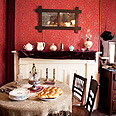
Jewish NYC: History, heritage and food
With a heritage that stretches back 400 years and vital contemporary community that's reinterpreting old traditions for 21st century, Jewish New York features museums and historic sites, world's largest menorah and trendy new Tribeca restaurant
New York City has the largest concentration of Jews in the world outside of Israel, according to the Jewish Databank, which put the city's Jewish population at 1.4 million in 2002.
The stories of European Jews who arrived in the late 19th and early 20th centuries are relatively well-known and easy to find in places like the Lower East Side. But visitors with an interest in Jewish New York will also want to explore many other parts of the city, from the Jewish Children's Museum in Brooklyn to a 17th century graveyard on a Chinatown sidestreet.
An obvious place to start is Ellis Island, where the ancestors of so many American Jews first set foot on US soil. Boats run from Battery Park — schedules at http://www.statuecruises.com — to the National Park site in New York Harbor.
The Ellis Island museum offers a wealth of artifacts connected to Jewish immigrants, including a photo of a kosher kitchen that opened on the island in 1911 and an eye chart with a line of Hebrew letters.
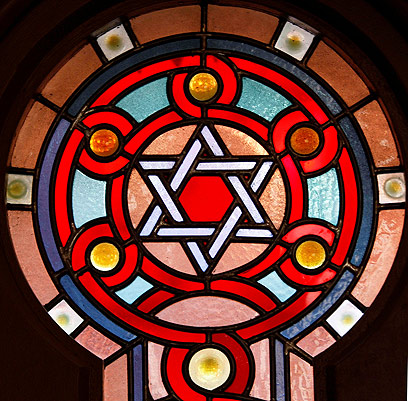
Recently restored Eldridge Street Synagogue (Photo: AP)
From where the boat lets you off on your return to Manhattan, you can walk to the Museum of Jewish Heritage in Battery Park City. Through summer 2012, the museum is hosting a fascinating exhibit about Emma Lazarus. Lazarus' sonnet "The New Colossus" with its famous line "Give me your tired, your poor, your huddles masses," is engraved on a tablet in the Statue of Liberty's pedestal, and Lady Liberty can be seen from the museum windows.
Lazarus was born in New York to an old Sephardic Jewish family; a letter about religious freedom from her great-great uncle to George Washington is part of the show.
The Museum of Jewish Heritage was created as a memorial to those who perished in the Holocaust. Many of its permanent exhibits are related to life before, during and after the Nazi persecution of Jews in Europe during World War II. Admission, $12 (children 12 and under free); closed Saturdays; http://www.mjhnyc.org/.
Nostalgic ties to Jewish past
A little farther uptown you'll find a newcomer restaurant with nostalgic ties to New York's Jewish past. Kutsher's Tribeca, which opened in November at 186 Franklin St., is the brainchild of Zach Kutsher, whose grandparents ran Kutsher's Country Club, a popular Catskills resort in its mid-20th century heyday.
The menu reinvents and updates favorite Jewish comfort foods, offering savory brisket meatballs, chopped liver made from duck, and yummy matzo ball soup with dill. You can even order caviar with your latkes — though the roe is not from sturgeon, which isn't kosher. (Kutsher's is not strictly kosher but it does not serve forbidden foods like pork or shellfish.)
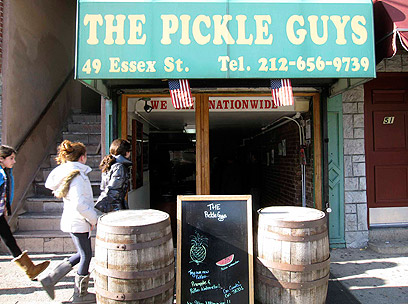
Store reminiscent of a past era (Photo: AP)
Drinks at Kutsher's hark back to fun times at the resort with names like Bungalow Bunny, the term for a wife spending the summer with her kids in the Catkills while her husband worked in the city; and Bug Juice, originally a summer camp drink for kids made from a combination of leftover juices.
The restaurant serves dinner from 5:30 pm on; beginning December 20, lunch will be served at noon. On December 25, Kutsher's will offer a special Chinese-themed menu in honor of the American Jewish tradition of going out for Chinese food on Christmas Day.
Next, head to Chinatown, where Jewish history is hiding in plain sight. Near the entrance to the Manhattan Bridge, just south of Chatham Square, is the oldest Jewish cemetery in the US, at 55 St. James Place. The graveyard was used from 1682 to 1828 by Congregation Shearith Israel, also known as the Spanish and Portuguese Synagogue.
Today Shearith Israel's synagogue is uptown at 2 W. 70th St., but the congregation was founded in the 1650s by Sephardic Jews who settled in Lower Manhattan when it was New Amsterdam, a Dutch colony. Emma Lazarus belonged to the congregation, as did her famous relative, US Supreme Court Justice Benjamin Cardozo.
The St. James cemetery is one of three historic Shearith Israel graveyards located on lonely Manhattan sidestreets; the others are at 76 W. 11th St., used from 1805-1829, and on West 21st Street west of Sixth Avenue, used from 1829 to 1851. You can still make out dates and names in Hebrew and English on many tombstones.
"It is indeed remarkable seeing these old cemeteries amidst all the buildings — silent tributes to our ancestors and a New York of days gone by," said Rabbi Hayyim Angel of Shearith Israel.
Heading north, where Chinatown runs into the Lower East Side, you'll find the Eldridge Street Synagogue, 12 Eldridge St., http://www.eldridgestreet.org. It was founded in 1887 as the first great house of worship built by Eastern European Jews in the US In 2007, after a 20-year, $18 million restoration, a museum opened onsite about the synagogue and local Jewish history.
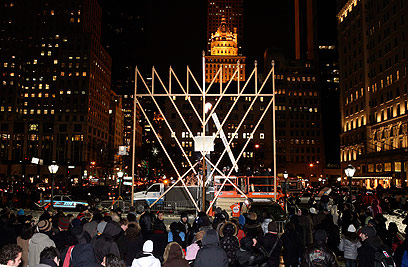
World's largest Hanukkah menorah (Photo: AP)
Nearby is the Lower East Side Tenement Museum, 97 Orchard St., http://www.tenement.org. The building dates to 1863, but it was a time capsule when the museum acquired it in 1996: Its apartments had been sealed off since 1935. Museum tours ($22) now tell the stories of the real people who lived there.
The building housed immigrants from various countries and religious backgrounds, but several tours — one called "Hard Times" and another called "Sweatshop Workers" — focus on Jewish families. The museum also offers "Foods of the Lower East Side," a walking tour ($45) with tastings at neighborhood eateries like Kossar's Bialys, 367 Grand St., and The Pickle Guys, 49 Essex St.
Other worthwhile stops in the area include the Bialystoker Synagogue, organized in 1865 and housed in an 1826 fieldstone Federal style building at 7-11 Willett St.; and the Lower East Side Jewish Conservancy, which offers walking tours on New York Jewish history and operates a storefront visitor center at 400 Grand St. with interesting exhibits; http://www.lesjc.org.
During Hanukkah, the Chabad-Lubavitch Jewish outreach organization sponsors the lighting of a massive menorah, 32 feet tall, on Fifth Avenue and 59th Street near Central Park, December 20-27. Candles are lit at 5:30 pm, except for the Sabbath, with a 3:30 pm lighting December 23 and 8:30 pm December 24.
Warm welcome to all
The Jewish Children's Museum, in Crown Heights, Brooklyn (792 Eastern Parkway, Kingston Avenue stop on the No. 3 train), offers hands-on interactive exhibits about holidays and culture along with a climbing wall for young children and a mini-golf course.
Kids can crawl through a challah bread tunnel, go shopping in a kosher supermarket and walk through the creation story from the Old Testament. A program on pressing oil for Hanukkah takes place December 18-January 1. Museum admission, $10; kids under 2, free; closed Friday-Saturday; http://www.jcm.museum.
Many visitors to the Jewish Children's Museum are from the local Lubavitch community but the museum gives a warm welcome to all and hosts 20,000 public school children a year in addition to families. Its mission is to promote tolerance; it was created in memory of Ari Halberstam, a local teen murdered in a 1994 terrorist attack.
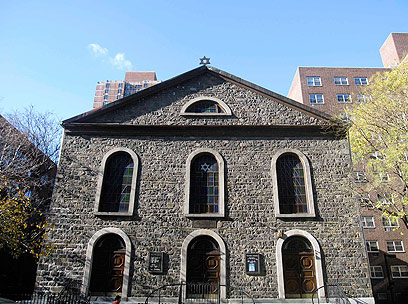
Exterior of Bialystoker Synagogue (Photo: AP)
On Manhattan's Museum Mile, the Jewish Museum at 92nd Street and Fifth Avenue is hosting "The Snowy Day and the Art of Ezra Jack Keats," a moving tribute to the beloved author of books like "Whistle for Willie." Keats was born Jacob Ezra Katz in Brooklyn in 1916 to Eastern European Jewish immigrants.
The exhibit looks at how the poverty and anti-Semitism he experienced as a child influenced his work. Young visitors will enjoy a reading room inspired by Keats' stories.
The Jewish Museum is also hosting an exhibit of 33 Hanukkah menorahs chosen from its permanent collection by another favorite children's author, Maurice Sendak, who wrote "Where the Wild Things Are."
Sendak, also born in Brooklyn to Jewish immigrant parents, lost much of his extended family in the Holocaust. The Keats and Sendak exhibits are on view through January 29. Admission, $12; children under 12, free; closed Wednesdays; http://www.thejewishmuseum.org/.
Finally, if you're crazy about latkes (potato pancakes eaten during Hanukkah), head to the Brooklyn Academy of Music, December 19 at 6:30 pm for the third annual Latke Festival, where top chefs compete to create the best latke. Tickets are $30; http://www.greatperformances.com/latkefest.










